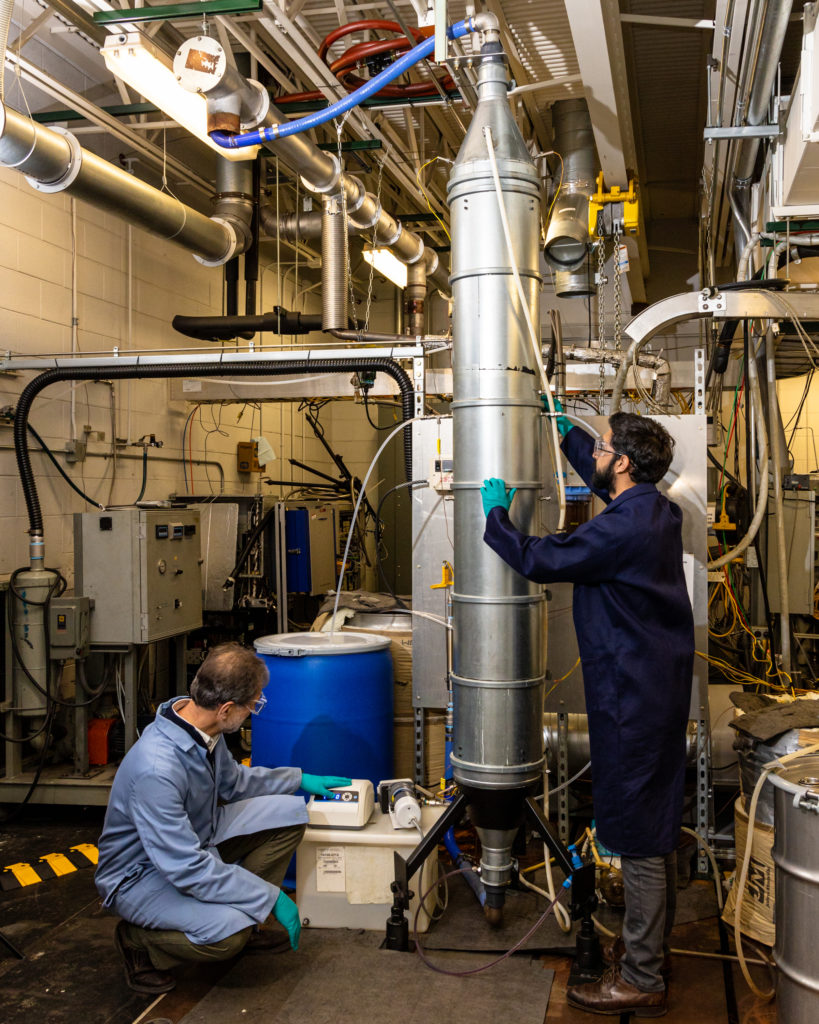German technology giant Siemens already uses 3D printing extensively on its turbine blades and through its service bureau, while also developing depowdering hardware, modeling and simulation software, and much more. Most recently, it opened the Charlotte Advanced Technology Collaboration Hub (CATCH) in Charlotte, NC, where the industrial giant will work with clients to advance additive manufacturing (AM) for production. It really seems like the industrial giant is circling the additive sector swooping in where the opportunities lie.
Now, Siemens has announced that it will work with the U.S. Department of Energy’s (DOE) Manufacturing Demonstration Facility (MDF) at Oak Ridge National Laboratory (ORNL). The new partnership is an extension of previous collaborations between Siemens and ORNL dedicated to materials and advanced manufacturing methods. This time, ORNL will assist the CATCH facility in its work to industrialize AM.
“The joint collaborative research done at MDF to address industrial problems demonstrates the success of the DOE’s MDF model and clearly shows the need for a path to industrialization through similar hubs in industry focusing on higher technology readiness levels. Siemens launched its Charlotte Advanced Technology Collaboration Hub (CATCH) to fill this void,” stated Dr. Anand Kulkarni, Senior Principal Key Expert at Siemens Technology.
Ultra Safe Nuclear Corporation has licensed a novel method to 3D print highly resistant components for use in nuclear reactor designs. USNC Executive Vice President Kurt Terrani, formerly of ORNL, said the novel method will allow the company to make parts with desired complex shapes more efficiently. Credit: Carlos Jones/ORNL, U.S. Dept. of Energy
With $62 billion in revenues and over 300,000 employees, Siemens makes wind turbines, trains, industrial automation, lighting, medical scanners, just to name a few product lines. Along with similarly diverse and complex engineering groups, it can use 3D printing and serve the market in many ways. Meanwhile, ORNL has already made a lot of progress in 3D printing through work on EBM, 3D printing for nuclear reactors, real time AI print assessment, large-scale 3D printing technologies such as BAAM, among many other things.
“ORNL and the researchers at MDF are proud to collaborate with innovative industrial partners like Siemens to help advance and revitalize the U.S. manufacturing sector. We recognize that our DOE-funded research is often best leveraged through regional and national collaborations like CATCH and the MDF, helping to advance additive manufacturing technology, drive workforce development and create a more efficient and de-carbonized manufacturing base,” said Bill Peter, Advanced Manufacturing Program Manager of ORNL.
ORNL researchers demonstrated a 3D-printed power pole made of bioderived and recycled materials could be easily manufactured, transported and assembled, enabling the quick restoration of power after natural disasters. Credit: ORNL, U.S. Dept. of Energy
Siemens is the default controls software for a lot of manufacturing technologies. It also has strong positions in machine displays, product lifecycle management, and design software. It has a lot to lose if the future of 3D printing does not include Siemens components and software. In fact, its hardware is already featured in a large number of 3D printers. Additionally it can gain a lot by using its 3D printing prowess internally.
For companies such as Siemens and Bosch, significant investment in 3D printing can easily be offset through gains made by deploying the technology internally. Any kind of savings in mass reduction, time to market, and higher performing shapes will also compound any revenue made from selling the technology or selling ancillary things such as NX licenses. Siemens could easily swallow Materialise and SLM Solutions and become the default 3D printing company if it wanted to. However, an SLM acquisition could alienate other OEMs and cause them to turn elsewhere for automation and integration software and tools. Buying Materialise, if it ever was for sale, is the most obvious move for the company. But, again, this could perhaps alienate 3D Systems or Stratasys, who are increasingly turning to software themselves.
“We are excited to launch this new additive manufacturing hub and begin inviting customers in to collaborate and find ways to accelerate the industrialization of this technology using our machine-agnostic solutions. The benefits of additive manufacturing are clear — from faster time-to-market to better design through digital prototypes, to localized manufacturing helping to reduce supply chain constraints. We believe that future of manufacturing is additive,” said Tim Bell, Additive Manufacturing Business Manager of Siemens Digital Industries, with whom 3DPrint.com recently spoke about the new CATCH facility.
Ever seen an elephant dance? This is what Siemens is doing now. It is tip-toe, cha-cha-cha-ing around our industry trying to get us to dance with it. It hopes we approach it and, in its shadow, will feel the warmth of a giant embrace without worrying if we’re all going to get crushed.
